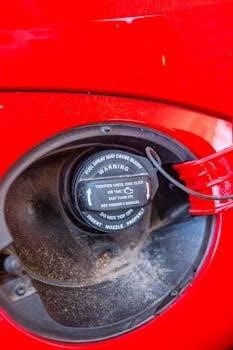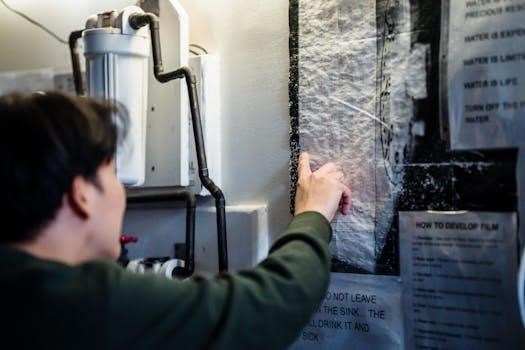Knex Roller Coaster Instructions⁚ A Comprehensive Guide
Welcome to the ultimate guide to Knex roller coaster construction! This resource provides a step-by-step approach․ From basic designs to advanced techniques like loops, corkscrews, and motorized lifts, we cover it all․
Embark on an exciting journey into the world of Knex roller coasters! These construction sets offer a unique blend of creativity, engineering, and fun․ Building a Knex roller coaster is more than just snapping pieces together; it’s an exercise in problem-solving, spatial reasoning, and physics․
Knex roller coasters are engaging and educational․ They allow builders to design and construct miniature versions of thrilling amusement park rides․ Whether you’re a beginner or an experienced builder, Knex provides endless possibilities for creating custom coasters․ Each project presents a new challenge and a chance to learn․
This guide will provide you with the necessary knowledge and resources to bring your roller coaster visions to life․ From understanding the basic components to mastering advanced building techniques, you’ll be equipped to create impressive and functional Knex roller coasters․

Understanding Knex Parts and Connections
Before embarking on your roller coaster design, mastering Knex parts and connections is essential․ Learn to identify key pieces and how they connect to build a strong and functional structure․
Identifying Key Knex Pieces for Roller Coasters
Building a Knex roller coaster begins with understanding the fundamental components․ Crucial elements include rods, connectors, and track pieces․ Rods provide the structural framework, available in various lengths for different support needs․ Green, white, blue, and gray rods offer increasing strength and are vital for stability․
Connectors are the linchpins, linking rods at different angles․ Gray single-slot connectors, orange three-slot connectors, and blue four-slot connectors enable diverse structural configurations․ Hinges, pivoting connectors, add flexibility․
Track pieces are essential for guiding the coaster car’s path․ Straight tracks, curved tracks, and flexible tracks allow for creative designs․ Understanding these components allows you to build stable and thrilling rides․ Familiarizing yourself with these pieces ensures successful coaster construction․
Mastering Knex Connection Techniques
Successfully building Knex roller coasters requires mastering various connection techniques․ Proper connections ensure structural integrity and prevent your coaster from collapsing․ Snapping rods into connectors is the most basic technique, ensuring a firm, audible click to confirm the connection․ Reinforce connections by using multiple rods and connectors at critical junctions, like base supports and track joints․
Angled connections, achieved with multi-slot connectors, allow for complex geometries․ Experiment with different connector orientations to find the strongest configuration․ Hinges introduce movement and flexibility, useful for creating tilting sections․
Pay attention to the direction of force․ Distribute weight evenly across the structure by strategically placing connectors and supports․ A weak connection can lead to catastrophic failure, so double-check every joint․ Careful attention to connection techniques leads to impressive and durable Knex roller coasters․

Step-by-Step Instructions for Basic Knex Roller Coaster Design
Embark on building your first Knex roller coaster! Follow our simple instructions, beginning with planning the layout․ Construct a sturdy base and gradually build the track, ensuring secure connections․
Planning Your Roller Coaster Layout
Before diving into the build, planning your Knex roller coaster layout is crucial․ Consider the space available and the desired complexity․ A well-thought-out plan prevents frustration later․ Start with a basic sketch, mapping out the track’s path․
Think about the height of the initial drop, the length of the track, and any turns or curves you want to incorporate․ A longer track requires more supports․ The initial drop determines the coaster’s speed․ Simple designs are best for beginners․
Use graph paper to visualize the layout accurately․ Mark the positions of supports and connection points․ Ensure the design is stable․ A balanced layout improves the coaster’s performance․ Experiment with different designs on paper before building․
Remember, safety is key․ Ensure enough clearance between track sections․ Consider adding safety features, such as brakes․ A well-planned layout will result in a smoother, more enjoyable ride․ Don’t be afraid to modify your design as you build․
Building a Simple Knex Track
Begin by assembling straight track sections․ Connect them securely using appropriate Knex connectors․ Ensure each connection is firm to prevent derailments․ Support the track with vertical rods and connectors․ The distance between supports depends on the track’s curvature․
For a simple track, maintain a consistent slope․ This ensures smooth movement of the coaster car․ Use different colored connectors to mark key points․ Gradual inclines and declines are easier for beginners; Avoid sharp turns initially․
Construct a starting platform at the highest point of the track․ This is where the coaster car begins its journey․ Make sure the platform is stable and can hold the car securely․ Test the track’s alignment frequently as you build․
Use flexible track pieces for gentle curves․ Connect them carefully to avoid kinks․ Ensure the track is level and free of obstructions․ Once the track is complete, test it with a coaster car․ Make adjustments as needed to improve performance․

Advanced Knex Roller Coaster Techniques
Ready to take your Knex coaster to the next level? Explore techniques for loops, corkscrews, and motorized lifts․ Prepare for complex builds and thrilling results!
Creating Loops and Corkscrews
Creating loops and corkscrews in your Knex roller coaster design requires careful planning and precise execution․ These advanced elements introduce exciting twists and turns, but they also demand a strong understanding of structural integrity and momentum․ Begin by reinforcing the track supports around the loop or corkscrew to prevent collapse․ Use flexible Knex pieces to achieve smooth curves, avoiding sharp angles that can derail the coaster car․
Experiment with different radii for your loops to find the optimal balance between speed and stability․ Corkscrews should gradually twist the track, ensuring a seamless transition․ Consider using motorized lifts before these elements to provide sufficient initial velocity․ Test your designs thoroughly and adjust supports as needed to guarantee a thrilling and reliable ride․ Mastering loops and corkscrews will significantly enhance the excitement of your Knex roller coaster․
Implementing Motorized Lifts
Motorized lifts are crucial for adding height and momentum to your Knex roller coaster, enabling more complex track layouts and thrilling drops․ To implement a motorized lift, you’ll need a Knex motor, gears, and chain or conveyor belt system․ Start by building a sturdy tower to support the lift mechanism․ Carefully align the motor and gears to ensure smooth and consistent power transmission․
The chain or conveyor belt should be taut and securely attached to the track, preventing slippage․ Pay close attention to the spacing of the lift mechanism to accommodate the coaster car without causing jams․ Adjust the motor speed to achieve the desired lift rate․ Test the lift mechanism thoroughly before integrating it into the full coaster design․ A well-designed motorized lift will significantly enhance the overall experience․

Finding and Utilizing Knex Roller Coaster Instructions Online
Discover a wealth of Knex roller coaster instructions online․ Official manuals, community resources, and user-generated designs provide diverse inspiration and guidance for builders of all skill levels․
Official Knex Instruction Manuals
Official Knex instruction manuals are invaluable resources for builders seeking reliable guidance․ These manuals provide detailed, step-by-step instructions for constructing various Knex roller coaster models․ They typically include clear diagrams, parts lists, and helpful tips to ensure a successful build․
Knex often provides these manuals in PDF format on their website, allowing users to easily download and print them․ These digital manuals offer a convenient way to access instructions on computers, tablets, or smartphones․
By using official Knex manuals, builders can avoid guesswork and ensure that they are following the manufacturer’s recommended construction methods․ This can lead to a more stable and functional roller coaster․
These manuals often include troubleshooting sections that address common issues that may arise during the building process․ By referring to these sections, builders can quickly resolve problems and continue their construction efforts․
Community Resources and User-Generated Designs
Beyond official Knex manuals, a vibrant online community offers a wealth of resources and inspiration for Knex roller coaster enthusiasts․ Numerous websites, forums, and social media groups are dedicated to sharing user-generated designs and building tips․
These community resources often feature innovative roller coaster designs that go beyond the standard models offered by Knex․ Builders can find instructions, videos, and photos detailing the construction process for these unique creations․
User-generated designs often incorporate advanced building techniques and creative problem-solving․ By exploring these designs, builders can learn new skills and expand their knowledge of Knex construction․
Online forums and social media groups provide platforms for builders to connect with one another, share their experiences, and ask questions․ This collaborative environment can be invaluable for troubleshooting problems and refining building techniques․
Many community resources also offer downloadable instructions and parts lists for user-generated designs․ This makes it easier for builders to replicate these creations and customize them to their own preferences․
